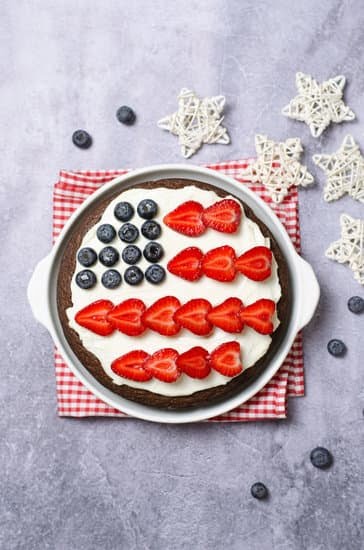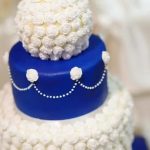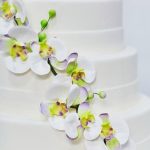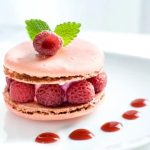Are you looking to take your baking skills to the next level? If so, mastering the art of cake decorating is a must. Whether you’re a novice or an experienced baker, knowing how to prepare icing for cake decoration is essential in achieving stunning and delectable desserts. In this article, we’ll explore the ins and outs of cake decorating, with a specific focus on the preparation and application of icing.
Cake decorating is both a science and an art, requiring precision, creativity, and attention to detail. From birthday parties to wedding celebrations, a beautifully decorated cake can be the centerpiece of any special occasion. Understanding different types of icing and learning how to prepare them are key elements in creating visually appealing and delicious confections.
In this comprehensive guide, we’ll delve into the various types of icing used for cake decoration, essential ingredients for making icing from scratch, a step-by-step tutorial on preparing icing, tips for achieving the perfect consistency, creative techniques for applying icing to cakes, common mistakes to avoid when making and applying icing, as well as inspiration and ideas for decorating with icing.
Whether you’re aiming for professional-quality results or simply want to elevate your home-baked creations, this article will provide you with all the knowledge and inspiration you need to become a master at using icing for cake decoration.
Understanding Different Types of Icing for Cake Decoration
When it comes to cake decoration, understanding the different types of icing is crucial. Different types of icing yield different results and knowing when to use each one can make a huge difference in the overall look and taste of your cake. In this section, we will explore the most common types of icing used for cake decoration.
Buttercream
Buttercream is a classic choice for cake decorating. It is made from butter, confectioners’ sugar, and flavorings such as vanilla or chocolate. Buttercream has a smooth and creamy texture, making it perfect for piping borders, flowers, and other intricate designs on cakes.
Fondant
Fondant is a pliable icing that can be rolled out into a thin sheet and draped over a cake for a smooth finish. It is often used for wedding cakes and special occasion cakes due to its elegant appearance. Fondant can also be shaped into various decorations such as flowers, ribbons, and figurines.
Royal Icing
Royal icing dries to a hard, glossy finish, making it ideal for creating intricate details on cakes such as lacework or delicate piping. It is commonly used to create traditional wedding cake decorations and gingerbread house designs.
Understanding the characteristics of each type of icing will help you choose the best one for your specific cake decorating needs. Knowing how to prepare each type of icing will give you the versatility to create stunning designs that will impress your friends and family with your baking skills.
Essential Ingredients for Making Icing
When it comes to decorating a cake, the right icing can make all the difference. Whether you prefer a classic buttercream, a rich ganache, or a light and fluffy whipped cream frosting, each type of icing requires a different set of essential ingredients. Here, we will explore the key components that are commonly used to make icing for cake decoration.
One of the most common types of icing is buttercream, which typically consists of butter, powdered sugar, and vanilla extract. These simple ingredients come together to create a smooth and creamy frosting that can be flavored and colored in countless ways.
On the other hand, royal icing is made from confectioners’ sugar and egg whites or meringue powder, giving it a hard and shiny finish that is perfect for intricate designs. Ganache, often used for elegant chocolate cakes, requires just two ingredients: chocolate and heavy cream.
Another crucial ingredient when making icing is food coloring. Whether using gel-based or liquid food coloring, adding color to your icing can elevate the overall aesthetic of your cake. Additionally, flavor extracts such as almond, lemon, or peppermint can enhance the taste of your icing while complementing the flavors in your cake.
In addition to these primary ingredients, there are various techniques and additional elements that can be utilized to achieve the perfect consistency and texture for your icing. Mastering these essential components will allow you to create stunning decorative finishes on your cakes that are sure to impress any crowd.
| Ingredients | Type of Icing |
|---|---|
| Butter, powdered sugar, vanilla extract | Buttercream |
| Confectioners’ sugar, egg whites or meringue powder | Royal Icing |
| Chocolate and heavy cream | Ganache |
Step-by-Step Guide on How to Prepare Icing for Cake Decoration
When it comes to cake decoration, the right icing can make all the difference. Whether you’re a novice baker or an experienced cake decorator, knowing how to prepare icing for cake decoration is essential. There are various types of icing that can be used, each with its own unique properties and ways of preparation. In this section, we will provide a step-by-step guide on how to prepare icing for cake decoration.
First and foremost, it’s important to gather all the essential ingredients for making icing. This usually includes confectioner’s sugar, butter or shortening, flavoring extract, and milk or cream. The ratios of these ingredients may vary depending on the type of icing you want to make. For example, buttercream icing typically requires a higher ratio of butter to sugar for a rich and creamy texture.
Once you have gathered all the necessary ingredients, you can begin preparing the icing following a specific recipe or method. For example, to prepare simple buttercream icing, you would start by creaming together softened butter with confectioner’s sugar until light and fluffy. Then, you can add in flavoring extract and a small amount of milk or cream until you achieve the desired consistency.
Pay close attention to the texture and taste of the icing as you mix in the ingredients. This step-by-step process will ensure that your icing turns out perfectly for cake decoration.
Understanding how to prepare different types of icing for cake decoration is crucial in achieving professional-looking results. By following a step-by-step guide and experimenting with various recipes and techniques, you can master the art of preparing icing for cake decoration and create stunning cakes for any occasion.
Tips and Tricks for Achieving the Perfect Consistency
When it comes to cake decoration, achieving the perfect consistency for your icing is crucial for a successful outcome. Whether you’re a beginner or an experienced baker, getting the right texture and thickness can make all the difference in the appearance and taste of your cake. Here are some tips and tricks to help you achieve the perfect consistency for your icing:
- Use room temperature ingredients: One of the key factors in achieving the perfect icing consistency is using room temperature ingredients. This includes butter, cream cheese, and any other dairy or liquid ingredients. Room temperature ingredients blend together more smoothly, resulting in a creamier and more consistent texture for your icing.
- Gradually add liquid: When preparing your icing, it’s important to gradually add liquid (such as milk or heavy cream) to achieve the desired consistency. Adding too much liquid at once can result in overly thin or runny icing, while adding too little can make it too thick and difficult to spread.
- Adjust with powdered sugar: If your icing turns out too thin, you can easily adjust the consistency by adding more powdered sugar. On the other hand, if your icing is too thick, you can remedy it by adding small amounts of liquid until you reach the desired texture.
Remember that practice makes perfect when it comes to preparing icing for cake decoration. It may take a few attempts to get the consistency just right, but with these tips and tricks, you’ll be well on your way to mastering the art of creating beautifully decorated cakes.
Creative Techniques for Applying Icing to Cake
Once you have prepared the perfect icing for cake decoration, it’s time to explore creative techniques for applying it to your cakes. The way you apply the icing can greatly impact the overall look and feel of your cake design. Here are some creative techniques that you can use to enhance your cake decorating skills:
- Piping: Piping is a versatile technique that allows you to create intricate designs with precision using a piping bag and various tips. From decorative borders to intricate flowers and patterns, piping offers endless possibilities for creating stunning designs on your cakes.
- Spatula or offset spatula: Using a spatula or offset spatula gives you control over applying smooth layers of icing on your cake. You can achieve clean lines and smooth finishes with this technique, making it ideal for simple yet elegant cake designs.
- Fondant application: Fondant is a popular choice for creating detailed decorations on cakes. Whether covering an entire cake or sculpting figurines and shapes, fondant allows for endless creativity in cake decoration.
By exploring these creative techniques and experimenting with different tools and methods, you can elevate your cake decorating skills and bring your artistic vision to life through beautifully applied icing designs on your cakes.
Creative Techniques for Applying Icing to Cake
When it comes to decorating a cake with icing, there are countless creative techniques and designs that can take your cake to the next level. From simple swirls to intricate patterns, the possibilities are endless. Here are some creative techniques for applying icing to a cake that will surely impress your friends and family.
Piping Designs
One of the most popular and versatile techniques for applying icing to a cake is piping. This method involves using a pastry bag and various tips to create different designs and shapes with the icing. From classic rosettes and shells to more intricate lace patterns and floral designs, piping allows for unlimited creativity when decorating a cake.
Textured Finishes
Another creative way to apply icing to a cake is by creating textured finishes. This can be achieved by using tools such as combs, spatulas, or even unconventional items like bubble wrap or paper towels to create interesting textures on the surface of the icing. Textured finishes can add depth and visual interest to your cake while also providing a unique touch.
Layered Ombre Effects
For a modern and stylish look, consider creating layered ombre effects with the icing on your cake. This technique involves layering different shades of colored icing on top of each other in a smooth gradient effect. Whether you go for bold and vibrant colors or subtle pastel hues, layered ombre effects can add a visually stunning dimension to your cake decoration.
By incorporating these creative techniques into your cake decorating repertoire, you can take your cakes from simple desserts to works of art. Experiment with different methods and find the ones that best suit your style and desired aesthetic. Remember that practice makes perfect when it comes to mastering the art of applying icing to cakes.
Common Mistakes to Avoid When Making and Applying Icing
When it comes to cake decoration, the icing plays a crucial role in the overall appearance and taste of the finished product. However, there are common mistakes that can occur when making and applying icing that can affect the outcome of your cake decorating efforts. Here are some key mistakes to avoid in order to achieve professional-looking results.
1. Using expired or low-quality ingredients: One of the most important factors in making a successful icing for cake decoration is using fresh and high-quality ingredients. Using expired or low-quality butter, sugar, or flavorings can result in an icing that doesn’t hold its shape or tastes off.
2. Not properly measuring ingredients: Accuracy is key when it comes to making icing. Failing to properly measure ingredients such as powdered sugar, butter, or milk can lead to an inconsistency in texture and taste. Be sure to use a kitchen scale or measuring cups and spoons for precise measurements.
3. Rushing the mixing process: When preparing icing for cake decoration, it’s important to mix the ingredients thoroughly but not overmix them. Overmixing can lead to a too-soft consistency, while undermixing can result in lumps or air bubbles.
4. Applying warm icing onto a cake: It’s essential to allow the icing to cool completely before applying it onto a cake. Warm icing will melt and run off the sides of the cake, resulting in a messy appearance.
5. Adding too much food coloring: While adding food coloring to your icing can create vibrant and eye-catching decorations, adding too much can alter the taste and consistency of the icing. It’s best to start with a small amount of food coloring and adjust as needed until you achieve your desired color.
By being mindful of these common mistakes, you can ensure that your efforts in making and applying icing for cake decoration will yield beautiful and delicious results for all your baked creations.
Inspiration and Ideas for Decorating With Icing
Once you have mastered the art of preparing icing for cake decoration, the next step is to explore different inspiration and ideas for decorating with icing. Whether you are a beginner or an experienced baker, there are endless possibilities when it comes to using icing to create stunning designs on your cakes.
One popular technique for decorating with icing is using a piping bag and various tips to create intricate designs. This can include classic techniques such as creating rosettes, stars, and borders, as well as more advanced techniques like making flowers, leaves, and other detailed patterns. Experimenting with different piping tips and practicing your technique will help you develop your skills and create beautiful designs on your cakes.
In addition to piping, consider using offset spatulas and palette knives to apply icing in creative ways. These tools allow you to create smooth finishes, textured effects, and even beautifully blended color schemes. Use them to spread and shape the icing on your cakes in unique ways that add visual interest and dimension.
Another way to get inspired with decorating ideas is by looking at cake decorating books, attending classes or workshops, or simply browsing through social media platforms or websites dedicated to baking and cake decorating. You may come across new trends, innovative techniques, or traditional designs that spark your creativity and inspire you to try something new.
As you continue to experiment and practice with different techniques for applying icing on cakes, don’t be afraid to think outside the box and let your imagination run wild. With dedication and patience, you’ll soon discover that the possibilities for decorating with icing are truly endless.
Conclusion and Final Thoughts on Mastering Icing for Cake Decoration
In conclusion, mastering the art of preparing icing for cake decoration is an important skill for any aspiring baker or cake decorator. Understanding the different types of icing, essential ingredients, and the step-by-step process for making icing will set the stage for beautiful and delicious creations. Achieving the perfect consistency is key to successful cake decorating, and with the right tips and tricks, anyone can achieve professional-looking results.
Creative techniques for applying icing to a cake can take your creations to the next level. Whether you prefer traditional piping methods or more modern, innovative approaches, there are endless possibilities for expressing your creativity through icing. Additionally, being aware of common mistakes to avoid when making and applying icing will help you troubleshoot any issues that may arise during the decorating process.
Ultimately, with inspiration and ideas for decorating with icing, you can let your imagination run wild and create stunning designs that will impress friends, family, or clients. Whether it’s a simple birthday cake or an elaborate wedding masterpiece, mastering the art of preparing and applying icing will open up a world of possibilities for your baking and decorating endeavors.
So go ahead and start experimenting with different techniques; soon enough you’ll find yourself creating show-stopping cakes that are as beautiful as they are delicious.

Welcome to our cake decorating blog! My name is Destiny Flores, and I am the proud owner of a cake decorating business named Cake Karma. Our mission is to provide delicious, beautiful cakes for all occasions. We specialize in creating custom cakes that are tailored specifically to each customer’s individual needs and tastes.





